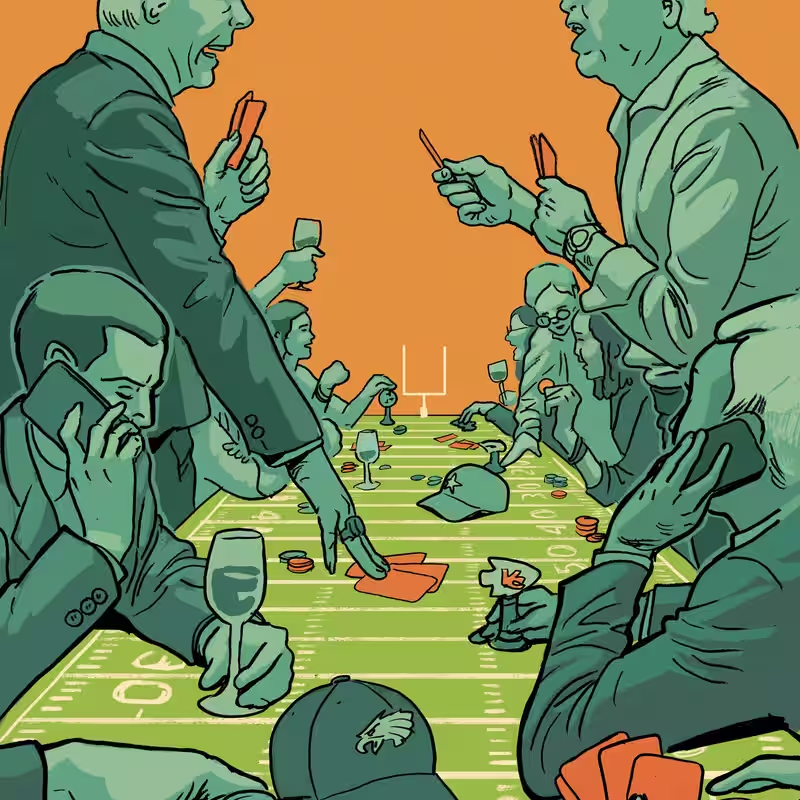Table of Contents
- The Most Exclusive Cafeteria in America
- NFL Owners and the Trump Factor
- Power Plays and Private Feuds
- How the NFL Tries to Stay Neutral
- What Happens Behind Closed Doors?
- Sources
The Most Exclusive Cafeteria in America
Four times a year, in luxury hotels from Manhattan to Palm Beach, the 32 billionaires who own NFL teams gather for meetings so secretive they’ve been dubbed “the world’s most powerful high school cafeteria.”
Inside these closed-door sessions, multimillion-dollar deals are struck, league policies are shaped, and personal rivalries simmer just beneath the surface. Unlike the on-field drama millions watch every Sunday, this real power game happens far from cameras—and public scrutiny.
NFL Owners and the Trump Factor
As the October 2025 owners’ meeting approaches in Manhattan, one shadow looms large: former President Donald Trump.
Trump has reignited his feud with the league, recently blasting the NFL for selecting Bad Bunny—a vocal critic of ICE—as the Super Bowl halftime performer. He also slammed the league’s new kickoff rules, designed to reduce concussions, calling them “soft” and “un-American.”
And in a move that stunned Washington insiders, Trump threatened to delay federal approvals for the Commanders’ new stadium unless the team reverted to its old, controversial name—a demand the league quietly rejected.
Power Plays and Private Feuds
Beyond politics, the owners’ meetings are rife with internal tensions. Tensions between legacy franchises and newer owners often flare over revenue sharing, media rights, and expansion plans.
One long-simmering dispute involves the proposed expansion into Toronto or London—backed by deep-pocketed owners like Jerry Jones of the Cowboys—but resisted by smaller-market teams worried about diluting the brand and revenue pool.
Meanwhile, personal egos collide. As one insider put it: “These aren’t just businessmen. They’re celebrities with checkbooks the size of small countries.”
How the NFL Tries to Stay Neutral
The league has learned hard lessons from past political entanglements. In 2017, Trump urged owners to “fire” players who knelt during the national anthem. The backlash fractured fan bases and forced the league into a defensive crouch.
Since then, the NFL has adopted a strategy of quiet diplomacy—avoiding public confrontations, keeping political statements off the field, and letting owners manage their own teams’ messaging.
“They’ve built a firewall between the league office and the White House,” said a former league executive. “The goal is to keep football as the one thing Americans can still agree on.”
What Happens Behind Closed Doors?
While agendas are tightly controlled by Commissioner Roger Goodell, much of the real action happens in hallway huddles and private dinners.
Topics on the October docket include:
- Finalizing the 2026 media rights package (projected to exceed $15 billion)
- Debating a potential 18-game regular season
- Addressing gambling partnerships as sports betting expands nationwide
- Reviewing stadium financing deals, including the Commanders’ D.C. proposal
Despite the opulence and power on display, one thing remains constant: the NFL’s obsession with unity. Even when owners disagree fiercely, they almost always emerge with a unanimous vote—a carefully choreographed show of solidarity.
As one veteran owner quipped: “We fight like hell in private… then smile for the cameras like we just won the lottery together.”




